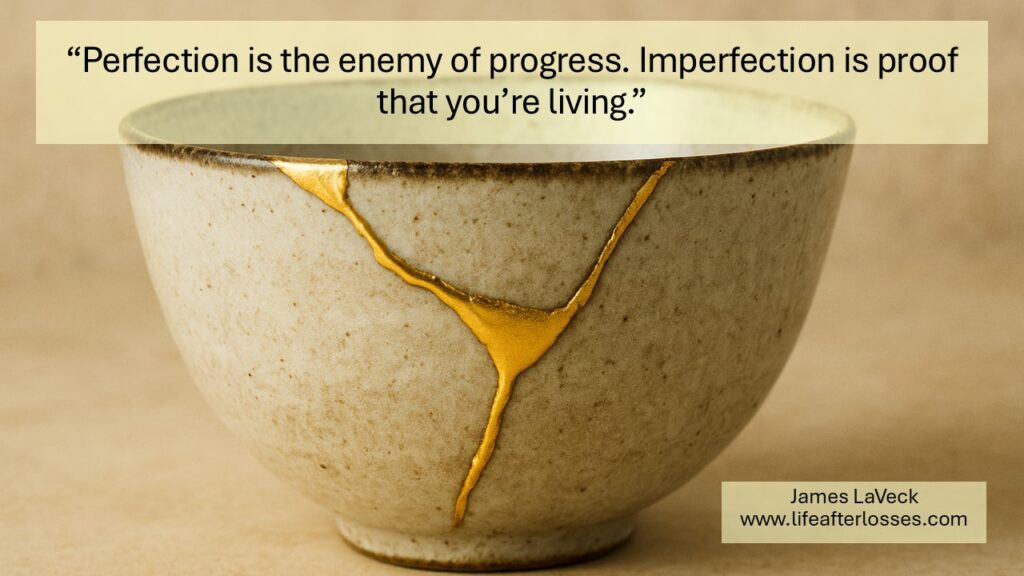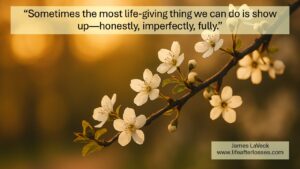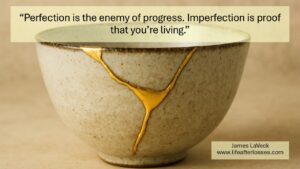We’ve all been there—telling ourselves that if we could just get it right, then we’d start. Then we’d post it, share it, apply for it, or finally feel ready. But perfection has a sneaky way of convincing us that “ready” is somewhere out there, just beyond reach. The truth? It’s a moving target that keeps us trapped in hesitation.
In the PURPOSE Framework, the first step—Perceive Reality—is about seeing things as they are, not as we wish they were. And the reality is simple: perfection doesn’t exist. It’s not the finish line we think it is. It’s a mirage that distracts us from progress.
The Illusion of Perfect
Perfection sounds noble, but it’s often fear wearing a disguise. We chase flawless results because we’re afraid of judgment, failure, or disappointment. But what we’re really doing is postponing life. While we wait for the “right time,” opportunities drift past. Conversations we could have had, ideas we could have tried, and experiences that might have shaped us—gone.
Think about it. The people we admire most aren’t perfect. They’re the ones who keep showing up even when they stumble. The ones who learn in public, course-correct, and try again. They’ve learned the truth that perfection hides from us: mistakes are the tuition we pay for growth.
Why the Perfection Trap Holds Power
The perfection trap is powerful because it promises safety. If we never start, we can’t fail. If we never speak up, we can’t be misunderstood. But that kind of safety is just another form of confinement. It keeps us small, cautious, and disconnected.
The irony is that perfectionism doesn’t protect our self-worth—it undermines it. Every time we hold back out of fear of being imperfect, we reinforce the false belief that our value depends on flawlessness. Over time, that pressure steals our joy and creativity.
Learning to See Imperfection Differently
So, how do we get out of the perfection trap? By changing how we see imperfection. Imperfection isn’t a problem to fix; it’s proof of life. It’s what makes us real, relatable, and human.
When you start to view imperfections as evidence of participation, not failure, everything shifts. That tiny misstep at work? Proof that you cared enough to try. The project that didn’t go as planned? A lesson that moved you closer to mastery. The awkward conversation that didn’t come out right? A sign that you were brave enough to speak.
Three Ways to Step Out of the Trap
1. Let good enough be good enough.
Aim for completion, not perfection. The next time you catch yourself tweaking a project or overthinking a choice, stop and ask, “Would this help someone if I shared it now?” If the answer is yes, release it. Perfection is subjective anyway; what you see as unfinished might be exactly what someone else needs.
2. Practice visible learning.
Instead of waiting until you’ve mastered something, share the process while you’re learning it. Talk about what you’re figuring out, what’s working, and what isn’t. That transparency not only deepens your learning but also invites others to see themselves in your progress. Imperfection builds trust.
3. Redefine success as progress.
Instead of measuring success by how perfectly you perform, measure it by how willing you are to try again. Ask yourself at the end of the day, “Did I move forward, even a little?” If the answer is yes, you’re already succeeding.
The Beauty in Imperfection
There’s an old Japanese concept called Wabi Sabi—the idea that beauty lives in the cracks, wear, and irregularities of life. A chipped bowl, a faded photograph, a story that doesn’t end neatly—all reminders that impermanence and imperfection are what make something genuine.
What if we looked at ourselves that way? What if we saw the lines, the scars, the stumbles, as the art of being human rather than the evidence of not being enough?
When we stop hiding our imperfections, we give other people permission to show up honestly, too. We make space for laughter, learning, and real connection. That’s the power of embracing what is instead of chasing what isn’t.
Your Challenge This Week
Perfection is the enemy of progress. So, this week, take one small, imperfect action in a direction that matters to you. Post the draft. Make the call. Ask the question. Try something that scares you a little.
Then reflect: What did I learn from trying rather than waiting?
And if you’re ready to dig deeper into how imperfection can become a strength instead of a flaw, I’ve created something for you.
📘 Looking for more ways to let go of perfection and embrace progress? I’ve created a practical guide/eBook to finding confidence, humor, and beauty in the messy parts of life, called Perfectly Imperfect, available to subscribers.
Because the moment you release perfection, you make room for growth, joy, and authenticity. And that’s where real progress begins.




